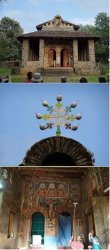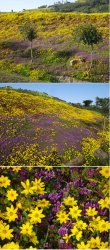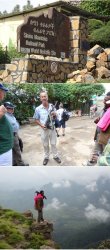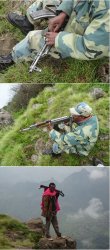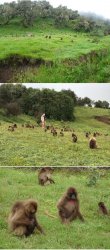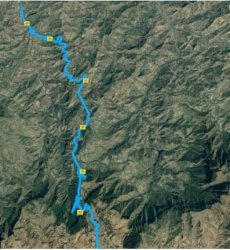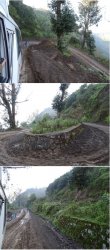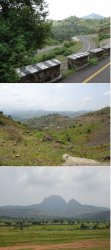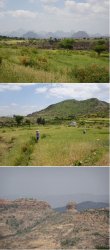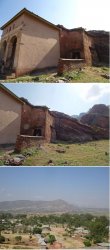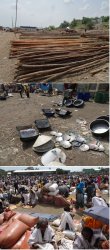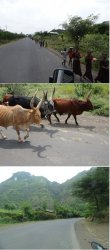- Joined
- Jun 7, 2006
- Posts
- 11,520
- Qantas
- LT Gold
One of the things that struck me about Ethiopia was the very large number of (often very large) unfinished buildings. Many had reached an advanced stage of construction and were essentially complete shells that had never been fitted out, like this massive hotel on Lake Tana at Bahar Dar. Quite why there were so many, I could not get a clear explanation, but it seemed very wasteful.
One of the many uses of eucalypt poles is scaffolding. Typical of where E. globulus occurs in dense plantings in wet environments on deep soils overseas, it grows very tall while still remaining slender. Harvesting clearly graded the timber into various pole thicknesses according to requirements of the (unmilled) product.

Heading north to Gondar from Bahar Dar.
The poles are used to make corrals for stock or covered semi-open storage and some of the buildings of identical construction are plastered with mud/straw adobe to enclose them.

General road views and crowned crane.

Mid-morning stop at Wereta. Some cobblestone streets may be a hangover from the Italian occupation in the late 19th century and again in the 1930s. It was a buzzing market day.

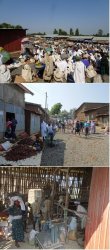
It was both harvest and next crop preparation time immediately following.

Climbing into the mountains and a spectacular and somewhat phallic residual element to impress RooFlyer.

Spectacular scenery generally and a gorgeous time of year to be in the region with the spring-like vegetation.

Typical village on the main road, people who had been at a funeral and some traditional (I’d say meaning pre-eucalypt-style) huts. Beautiful countryside.

Laundry day. Note the density of planting the Eucalypts in this small plantation – hence the tall, slender stems. Adobe-plastered eucalypt-framed housing.

One of the many uses of eucalypt poles is scaffolding. Typical of where E. globulus occurs in dense plantings in wet environments on deep soils overseas, it grows very tall while still remaining slender. Harvesting clearly graded the timber into various pole thicknesses according to requirements of the (unmilled) product.

Heading north to Gondar from Bahar Dar.
The poles are used to make corrals for stock or covered semi-open storage and some of the buildings of identical construction are plastered with mud/straw adobe to enclose them.

General road views and crowned crane.

Mid-morning stop at Wereta. Some cobblestone streets may be a hangover from the Italian occupation in the late 19th century and again in the 1930s. It was a buzzing market day.


It was both harvest and next crop preparation time immediately following.

Climbing into the mountains and a spectacular and somewhat phallic residual element to impress RooFlyer.

Spectacular scenery generally and a gorgeous time of year to be in the region with the spring-like vegetation.

Typical village on the main road, people who had been at a funeral and some traditional (I’d say meaning pre-eucalypt-style) huts. Beautiful countryside.

Laundry day. Note the density of planting the Eucalypts in this small plantation – hence the tall, slender stems. Adobe-plastered eucalypt-framed housing.











